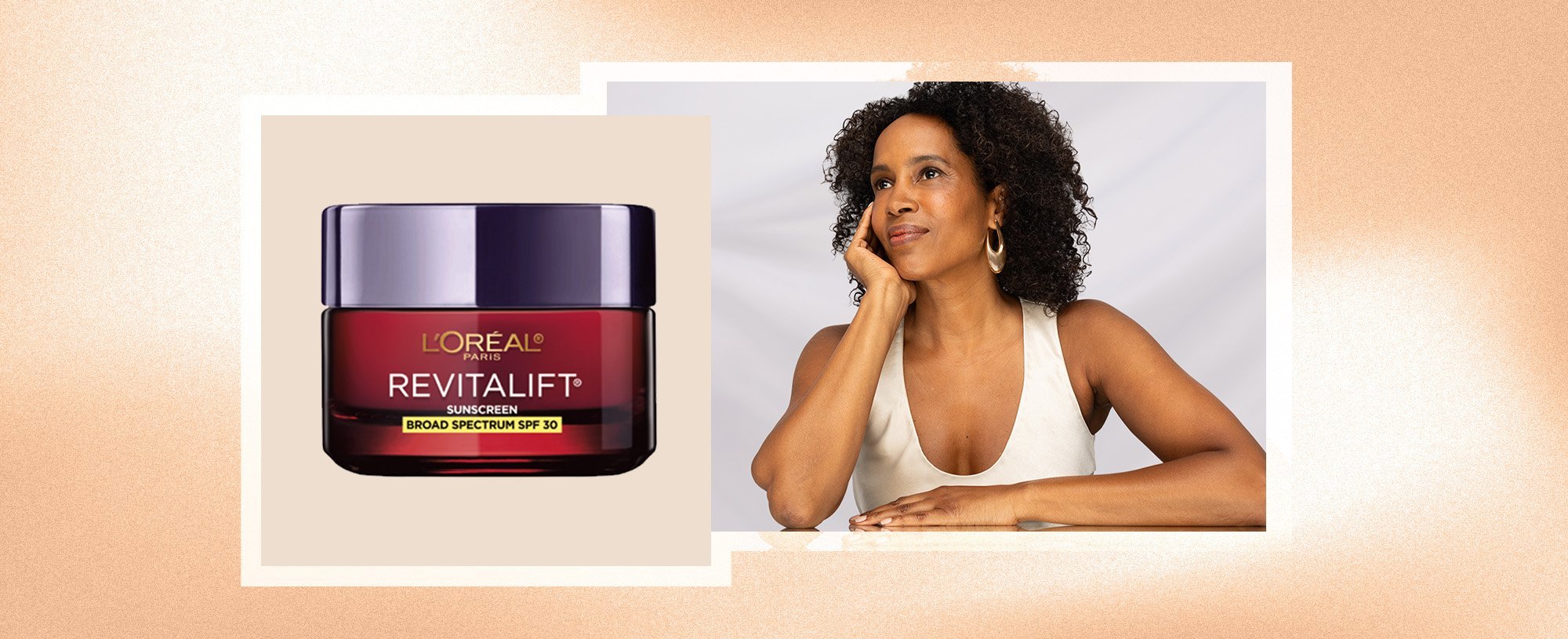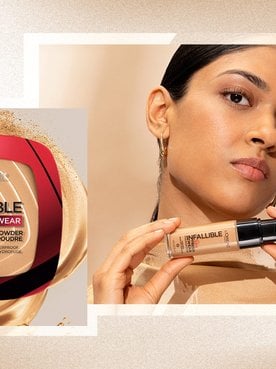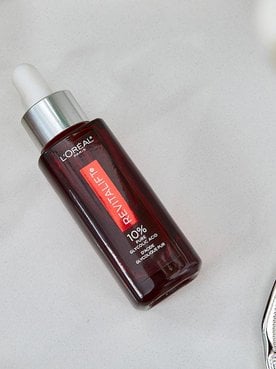Navigating skin tone and texture concerns can be challenging, especially since there are so many different ways unevenness can present. Sometimes, unevenness manifests in the form of discoloration or fine lines and wrinkles. Other times, it manifests as orange peel skin.
If you’ve never heard of an orange peel skin texture and want to learn more, you’ve come to the right place. Below, we’re sharing what orange peel skin is, what causes this common concern, and how to switch up your skincare routine to help promote a smoother, more even complexion.
What Is Orange Peel Skin?
Orange peel skin is just what you’re likely thinking it is—a skin concern in which your skin looks like an orange peel. By that, we don’t mean you’re sporting a tangerine-tinted complexion. Instead, it refers to a common concern characterized by large, visible pores, especially in the T-zone. In some cases, orange peel skin may coexist with blackheads or clogged pores, but that’s not always the case.
Editor’s note: In some areas, cellulite is also referred to as orange peel skin. However, this is an entirely different concern from enlarged pores and can’t typically be managed with skincare.
What Causes Orange Peel Skin?
Orange peel skin doesn’t have one root cause—there are several reasons someone might be dealing with this skin care concern. Here are a few of the most common.
Natural skin aging
As we age, the skin naturally loses collagen and elastin, two proteins that help to keep the skin firm and smooth. This loss in structural support can leave your skin vulnerable to sagging, which can stretch out your facial pores and contribute to that characteristic orange peel texture.
Sun damage
If you have orange peel skin on the face, sun exposure may be to blame. According to the Cleveland Clinic, uneven skin texture and a loss of elasticity are two of the most common signs of photoaging (premature skin aging due to sun exposure). These concerns may begin to develop in your late teens or early twenties, but typically become more prominent with age—especially if you don’t take measures to shield your skin from the sun’s damaging UV rays.
Genetics
Genetics can determine how prone you are to developing orange peel skin. According to the Cleveland Clinic, pore size is largely determined by genetics, meaning if your parents have large, visible pores, you’re likely to, as well. Having oily skin can also be a factor: Research shows that those with oily skin often have larger facial pores.
An improper skincare routine
No matter your skin type, following a tailored skincare routine designed for your skin’s needs is essential for keeping your complexion looking its best. If you have oily or blemish-prone skin, you’ll want to steer clear of heavy products that can clog your pores. Over time, congestion can stretch out your pores and make them more prominent.
How To Improve and Prevent Orange Peel Skin
If you’re wondering how to get rid of orange peel skin, we won’t lie—there’s nothing you can do to actually shrink the size of your pores. The most effective orange peel skin treatment is professional laser resurfacing, which can be costly (not to mention uncomfortable). However, a proper skincare routine can help make your pores appear smaller and promote a smoother skin texture. If you’re beginning to notice your skin becoming more textured, follow these tips to help keep your skin looking and feeling its best.
1. Wear sunscreen
It should come as no surprise that our top tip for preventing orange peel skin is to wear sunscreen every day (no exceptions). The United States Food and Drug Administration (FDA) recommends opting for a broad-spectrum formula with an SPF of at least 15. If you prefer a streamlined routine, consider choosing a moisturizer with SPF, like the L’Oréal Paris RevitaLift Triple Power Moisturizer with SPF 30. Remember that whichever option you choose, you’ll want to reapply your sunscreen at least every two hours (more often if you’re sweating or swimming) and do your best to avoid direct sunlight during the midday hours.

Shop the Products
2. Use a vitamin C serum
If you’re dealing with orange peel skin, try incorporating a vitamin C serum, like the L’Oréal Paris RevitaLift 12% Pure Vitamin C + E + Salicylic Acid Serum, into your daily skincare routine. This non-comedogenic pick absorbs quickly and helps address three key signs of skin aging: tone, pores, and lines. The lightweight serum instantly boosts radiance, while continued use visibly smooths the skin and diminishes the appearance of pores for a more youthful, refined complexion.

3. Exfoliate
Exfoliating can help buff away dead skin cells and minimize the appearance of large pores, making it a must for those looking to improve the look of orange peel skin. For gentle daily exfoliation, reach for an exfoliating serum, such as the L’Oréal Paris RevitaLift 10% Pure Glycolic Acid Serum. The dermatologist-validated formula works to smooth, refine, and brighten the skin, leaving it visibly more even over time.
For more intense (but still gentle) exfoliation, consider an at-home peel. The L’Oréal Paris Bright Reveal Dark Spot Peel is our top pick—it’s formulated with a trio of exfoliating acids and works quickly to refine skin texture and tone. Keep in mind that this potent formula isn’t meant for daily use. We recommend reaching for it four times per week (at night) for the best results.

4. Use blurring makeup
Makeup can be a helpful tool for those looking to make orange peel skin look smoother and more uniform. If you have large, visible pores, you may want to ditch the glowy and dewy base products in favor of matte-finish options, as these can help to control shine and temporarily make your pores less noticeable. If matte foundation isn’t your thing, try setting your problem areas with a setting powder, like the L’Oréal Paris Infallible Blur-Fection Longwear Loose Setting Powder. The talc-free formula helps set makeup in place and blurs the appearance of pores while providing all-day shine control for a flawless-looking finish.
Shop the Products
5. Visit a dermatologist
If you want to improve the look of your orange peel skin texture quickly, consider scheduling an appointment with your dermatologist. They have access to powerful treatments—such as laser resurfacing and microneedling—that can dramatically improve your skin’s texture. Keep in mind that these treatments rarely come cheap and often require a few days (or more) of downtime. Depending on the treatment you choose, repeated sessions may be necessary to maintain the results. Your dermatologist can help weigh the pros and cons of these professional treatments and work with you to determine the best approach for your skin type, goals, and lifestyle.
Next Up: How To Use an Exfoliating Face Mask or Peel
Photo courtesy of L’Oréal Paris







